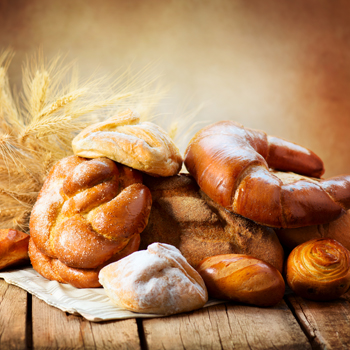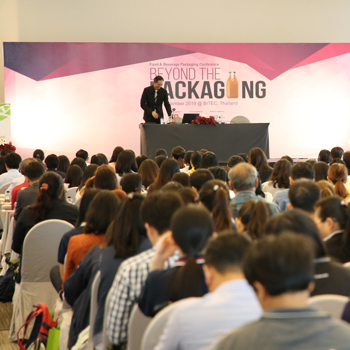
Continue reading “Enzyme: The Healthier Application for Bakery Products”

งานประชุมวิชาการด้านบรรจุภัณฑ์อาหารและเครื่องดื่ม Food & Beverage Packaging Conference: Beyond the Packaging ครั้งที่ 3 เปิดประตูต้อนรับผู้ประกอบการในอุตสาหกรรมอาหารและเครื่องดื่มที่เข้าร่วมประชุมวิชาการมากกว่า 300 คน ตอบรับเทรนด์บรรจุภัณฑ์และงานพิมพ์แห่งอนาคตในภูมิภาคเอเชียแปซิฟิก
Food & Beverage Packaging Conference: Beyond the Packaging จัดขึ้นภายในงานแสดงสินค้า Pack Print International 2019 ณ ไบเทค บางนา โดยความร่วมมือระหว่าง บริษัท บี มีเดีย โฟกัส (ประเทศไทย) จำกัด ผู้จัดทำนิตยสาร ฟู้ด โฟกัส ไทยแลนด์ และ Messe Dusseldorf Asia โดยนำเสนอเนื้อหาการบรรยายที่ครอบคลุมกลุ่มอุตสาหกรรมบรรจุภัณฑ์อาหารและเครื่องดื่มในทุกมิติ อาทิ ภาพรวมอุตสาหกรรมบรรจุภัณฑ์อาหารและเครื่องดื่ม เทรนด์บรรจุภัณฑ์อาหารระดับโลก วัสดุและคุณสมบัติที่สำคัญของบรรจุภัณฑ์ การรีไซเคิลพลาสติก ตลอดจนบรรจุภัณฑ์อัจฉริยะ แถมท้ายด้วยเทคนิคและกลยุทธ์การสร้างแบรนด์ของผลิตภัณฑ์อาหารและเครื่องดื่มให้ปังอย่างมืออาชีพ
Beyond the Packaging เป็นเวทีกลางที่สมบูรณ์แบบที่สุดในการแลกเปลี่ยนองค์ความรู้ของวงการบรรจุภัณฑ์จากผู้เชี่ยวชาญสู่ผู้ประกอบการ ผู้ผลิตผลิตภัณฑ์อาหารและเครื่องดื่ม ผู้ผลิตวัสดุบรรจุภัณฑ์ ผู้ผลิตบรรจุภัณฑ์ ตลอดจนผู้ที่สนใจ เพื่อขยายขีดความสามารถในการแข่งขันของผู้ประกอบการทั้งในระดับประเทศและระดับสากล โดยดึงดูดความสนใจจากผู้เข้าร่วมงามจำนวน 360 คน
“The 3rd Food & Beverage Packaging Conference: Beyond the Packaging” welcome more than 300 food and beverage entrepreneurs attending the conference in respond to learn about new trend on packaging and printing industry in the Asia-Pacific region in the future.
Food & Beverage Packaging Conference: Beyond the Packaging was held in conjunction with the Pack Print International 2019 at Bitec, Bangna, in collaboration with Be Media Focus (Thailand) Co., Ltd., the publisher of Food Focus Thailand Magazine and Messe Dusseldorf Asia. The conference presented knowledge covering the food and beverage packaging industry in all dimensions, such as on the overview of the food and beverage packaging industry, global food packaging trend, materials and important qualifications of packaging, plastic recycling, intelligent packaging, as well as techniques and strategies to create a famous and successful branding for food and beverage products like a professional.
With the great 360 participants this year, Beyond the Packaging is the most perfect platform for exchanging knowledge in the packaging industry from experts to entrepreneurs, food and beverage product manufacturers, packaging material manufacturers, packaging manufacturers. The conference also creates an opportunity to those who are interested in the industry in a bid to increase competitiveness for entrepreneurs both in domestic and international levels.